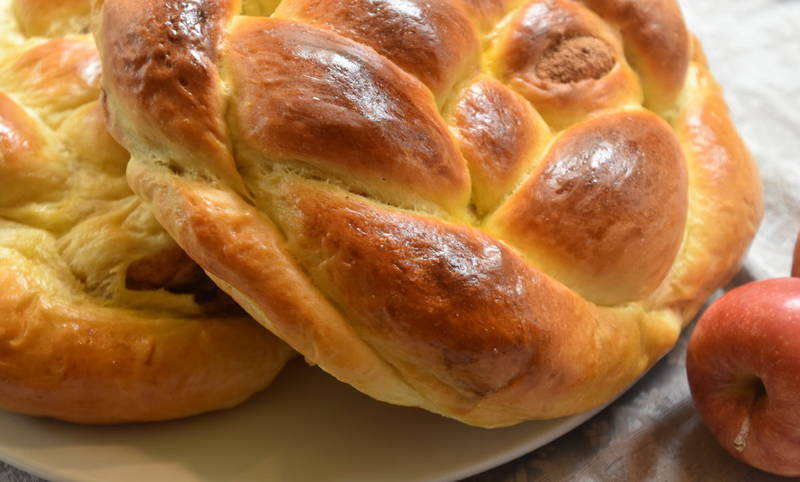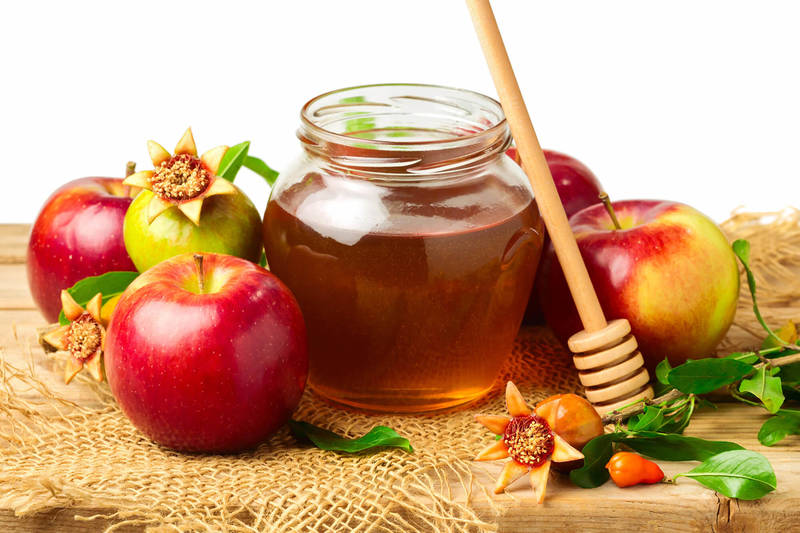About High Holy Days
The Month of Elul
 We often think of the Holy Days as beginning with Rosh Hashanah and ending with Yom Kippur. In fact, the Yamim Noraim (The Days of Awe) officially begin a month before the start of Elul. I think of Elul as the month of conditioning before the big climb; not up Mount Sinai, but rather inside ourselves. The primary task of Elul is to perform a Heshbone Ha’nefesh: An accounting of the soul, a time to ask the tough questions: Where have I gone wrong? Whom have I hurt? How have I let myself down? It is traditional during this time of year to ask people if you have offended them, and to ask for forgiveness.
We often think of the Holy Days as beginning with Rosh Hashanah and ending with Yom Kippur. In fact, the Yamim Noraim (The Days of Awe) officially begin a month before the start of Elul. I think of Elul as the month of conditioning before the big climb; not up Mount Sinai, but rather inside ourselves. The primary task of Elul is to perform a Heshbone Ha’nefesh: An accounting of the soul, a time to ask the tough questions: Where have I gone wrong? Whom have I hurt? How have I let myself down? It is traditional during this time of year to ask people if you have offended them, and to ask for forgiveness.
Why is the New Year in the fall? Our ancestors had several dates in the calendar marking the beginning of important seasons of the year. Originally, the first month of the Hebrew calendar was Nisan, in the spring. But the first of Tishrei, in the fall, was the beginning of the economic year, when the old harvest year ended and the new one began. Around the month of Tishrei, the first rains came in the land of Israel, and the soil was plowed for the winter grain. Eventually, the first of Tishri became not only the beginning of the economic year, but the beginning of the spiritual year as well.
S’lichot Services
Related to asking for forgiveness is the Elul: The Tradition of New Year’s greetings. As you send out your cards this year, note whom you do and to whom you don’t send cards. S’lichot comes from the Hebrew root “to be sorry”. S’lichot Services are part of the traditional month-long practice of preparing for the Holy Days. It is a service designed to open and soften the heart, enabling each of us to consider the person we are and how we can be healthier, happier and better in the New Year. We also take the Torahs out and dress them in their white, High Holy Day mantles. Our S’lichot services are a wonderful way to begin the process of opening our hearts up to who we are and who we want to be in the year ahead.
Days of Awe
Rosh Hashanah is the first of the High Holy Days, and begins a ten day period of soul searching that concludes with Yom Kippur. Tradition tells us that on Rosh Hashanah the names of the righteous are inscribed in the Book of Life, guaranteeing another year of life. For those who are not entirely good, judgment is suspended until Yom Kippur, when our good works and acts of repentance during those 10 days to turn away (make teshuvah) from our wicked ways. Synagogue services give us time to reflect and resolve, but prayer and meditation are not sufficient to wipe the slate clean. The only way to expunge sins committed against other people is by sincerely apologizing and asking for forgiveness.
Rosh Hashanah
 First, please set the time aside to actually go to services! Also, remember a festive meal before services and after is an important part of the celebration. It is traditional to eat apples dipped in honey. It is also traditional to include a round and sweet challah in your meal, as well.
First, please set the time aside to actually go to services! Also, remember a festive meal before services and after is an important part of the celebration. It is traditional to eat apples dipped in honey. It is also traditional to include a round and sweet challah in your meal, as well.
- What do the words “Rosh Hashanah” mean? Rosh Hashanah is Hebrew for head or beginning of the year. In the Torah, we read, “In the seventh month, on the first day of the month, there shall be a sacred assembly, a cessation from work, a day of commemoration proclaimed by the sound of the Shofar.” Therefore, we celebrate Rosh Hashanah on the first day of Tishrei, the seventh month of the Jewish calendar. The number assigned to the Jewish year changes on Rosh Hashanah based on ancient rabbinic reckoning of when the world was created.
- Why the round challah? The round challah, traditional for Rosh Hashanah, represents the circle of life.
- Why apples and honey? These two sweet treats help to usher in a sweet year. In addition, the apples, which are perishable, are preserved and kept fresh by the honey. Dip the apples in the honey and the apples, like our thousand year-old traditions, will remain fresh.
- Why the shofar? According to Leo Rosten, the shofar relates to the Torah portion that’s read on Rosh Hashanah morning, “The ram’s horn serves to remind the pious how Abraham, offering his son Isaac in sacrifice, was reprieved when God decided that Abraham could sacrifice a ram instead.”
- What is done in the home for Rosh Hashanah? The focus of home celebration is the evening meal served at the start of Rosh Hashanah. Rosh Hashanah menus vary among Jewish subcultures and from household to household, but two customs are pervasive: using a round challah (with or without raisins) , and starting Rosh Hashanah with apples dipped in honey. If you’re at a loss as to what to cook, there are a plethora of Jewish cookbooks on the market and there’s always the web!
- What is Tashlich? After Rosh Hashanah, people generally have lunch with family and friends. Then it is traditional to go to a lake, river, or harbor for a ceremony called Tashlich, from the Hebrew for “send off” or “cast away.” An informal and nonliturgical custom, people symbolically cast off their sins by emptying crumbs from their pockets into the water. At our Taschlich Service, we typically gather at Lake Ralphine to symbolically throw our sins into the water.
What happens in the synagogue for Rosh Hashanah?
Rosh Hashanah is primarily a liturgical or synagogue holiday with a few core elements, the blowing of a shofar (the horn of a ram or other animal) and distinctive holiday melodies, which are reprised over and over during Rosh Hashanah, and again on Yom Kippur.
- Rosh Hashanah prayers sound the themes of judgment and repentance, and the recurrent image of God as a father-king is given voice in one of the most memorable prayers and melodies of all the Jewish holidays, Avinu Malkeynu, “Our Father, our King.”
- During the morning service on Rosh Hashanah, the Torah readings, from Genesis 21 and 22, are always a focal point. Among the most powerful and problematic stories in the Torah, Genesis 21 tells of the birth of Isaac, the casting out of Hagar and Ishmael into the desert, and their subsequent deliverance.
- Genesis 22, which is the Torah reading for the second day, contains the terrible test of Abraham’s faith, when he is asked to sacrifice his son, Isaac. This story is referred to as “the binding of Isaac,” or the Akedah.
The Days in Between
According to tradition, during these intermediate days, The Book of Life is still open, and our fate for the year has yet to be sealed. We may not take this literally, yet the image works well as a metaphor for our work during these holy days. This is the time when our own heshbone ha’nefesh, our own accounting of the soul, intensifies. Whatever you have put off—reaching out to a loved one from whom you are estranged, paying a debt, telling someone “you care”—this is the time to do it! It is also traditional during these days to contribute to the Jewish Community and to give tzedakah. Are you paying your fair share? Are you giving enough to the needy in our community or elsewhere? This is the time to make an honest accounting.
Shabbat Shuvah
One of the holiest Shabbatot of the year falls between Rosh Hashanah and Yom Kippur; it is called Shabbat Shuvah, the Sabbath of Return. Teshuvah, or repentance, is a core concept of the High Holy Days. Shabbat Shuvah services are solemn and focused, with themes of repentance and forgiveness.
Yom Kippur
 As with Rosh Hashanah, the first thing you need to do is make sure you show up! If you have control over your work, plan to be absent. The same is true of school and any other activities that conflict with the observance of this holiest of holy days. Also, plan to stay for the whole day. Yes, it is long, but without going through the whole process, you won’t have the full experience. For those who can, fasting is also a must! Fasting really does elevate and deepen the experience of contrition and renewal during this most awesome of days.
As with Rosh Hashanah, the first thing you need to do is make sure you show up! If you have control over your work, plan to be absent. The same is true of school and any other activities that conflict with the observance of this holiest of holy days. Also, plan to stay for the whole day. Yes, it is long, but without going through the whole process, you won’t have the full experience. For those who can, fasting is also a must! Fasting really does elevate and deepen the experience of contrition and renewal during this most awesome of days.
The next essential element of Yom Kippur (and the rest of the Yamim Noraim) is an open and contrite heart. If what you do during the Holy Days doesn’t touch you “inside”, it is all for not! Thus, “May you be like a filleted fish before God.” Now that is open!
One last thing: Breaking-the-Fast. Fasting is important, as is getting together with family and friends afterwards to break-the-fast, share your Holy Day experience and celebrate the New Year. Try to plan some kind of fast-breaking celebration with family and/or friends. If you are at a loss as to where to go, know that the congregation always breaks-the-fast together right after services.
- What does “Yom Kippur” mean? Yom Kippur means “Day of Atonement.” Yom Kippur, the most somber day of the year is called Shabbat Shabbaton, the “Sabbath of Sabbaths” in the Bible. On this day devoted to reflection and repentance, healthy adults fast from all food and drink from sunset to sunset.
- What happens at Synagogue on Yom Kippur?
Yom Kippur service run throughout most of the day: Shacharit, the morning service, includes a Torah reading from Leviticus that describes the sacrificial rites for Yom Kippur in the Temple. Some congregations choose to substitute another Torah reading, often Deuteronomy 29:9-30:20, which ends with the lines “I have put before you this day life and death, blessing and curse. Choose life.” The morning Haftarah reading is Isaiah’s passionate sermon demanding justice and decrying religious hypocrisy.
Musaf, the “additional” service that follows Shacharit, includes recitation of the martyrology, which begins with a list of the murders of Talmudic sages by the Romans, and describes other persecutions culminating with the Nazi Holocaust. - What is the Jewish definition of sin? In Judaism, the word “sin” has different connotations than it does in our wider culture. “Sin” in Judaism is generally not something for which a person will be punished in the afterlife, but is rather an improper act for which one can ask forgiveness—not just of God, but of other human beings as well.
- How do we atone for our sins? Yom Kippur atones only for sins between humanity and God, not for sins against another person. To atone for sins against another person, you must first apologize, righting the wrongs you committed if possible. This must all be done before the conclusion of Yom Kippur.
- What is Kol Nidre? Services begin with the haunting melody of Kol Nidre, the opening prayer and also the name of the evening service. Kol Nidre is an Aramaic declaration that nullifies all the vows and promises that each person will make to God and to him/herself in the coming year, an acknowledgment of the weakness of human resolution.
What happens in the home for Yom Kippur?
Although this is probably the least home-based of all holidays, it begins and ends with a family meal. The evening meal is cooked with a mind to the fast ahead, so generally it is neither too heavy nor too spicy. Unlike other festival dinners, candle lighting takes place afterwards, marking the official start of Yom Kippur and the fast.
- After eating and before lighting the festival candles, it is traditional to light a candle in memory of family members who have died. Special yahrzeit (“year’s-time”) candles are available in Judaica shops and some supermarkets. These candles are lit without formal blessing, though some people say a silent prayer.
- After eating, the Yom Kippur candles are lit with the following blessing:
Baruch Ata Adonai, Eloheynu Melech Ha-olam, asher kid’shanu b’mitzvotav vitzivanu l’hadlik ner shel Yom HaKippurim.
Blessed are You, Holy One of Blessing, who makes us holy with commandments and call us to kindle the lights of Yom Kippur. - Yom Kippur ends with a light meal to break the fast. This repast has no formal rituals or ceremony apart from the blessing over bread, Hamotzi. Blessing for apple sections dipped in honey:
Baruch Ata Adonai Eloheynu Melech Ha-olam, boray p’ree ha’eytz. Y’hi ratzon she’te’chadesh aleynu shana tova umetukah.
Blessed are You, Holy One of Blessing, who creates the fruit of the tree. May it be Your will, Adonai, God of our fathers and mothers, to renew us for a good and sweet year. - Food prepared in advance is usually set out, buffet style, while family and friends discuss the relative difficulty of their fasts and the content of their rabbis’ sermons. It is a mitzvah to invite to your table anyone who might have nowhere else to break the fast.
Many families contribute both money and canned goods to help feed the hungry. Synagogues often collect food for distribution to local pantries.

